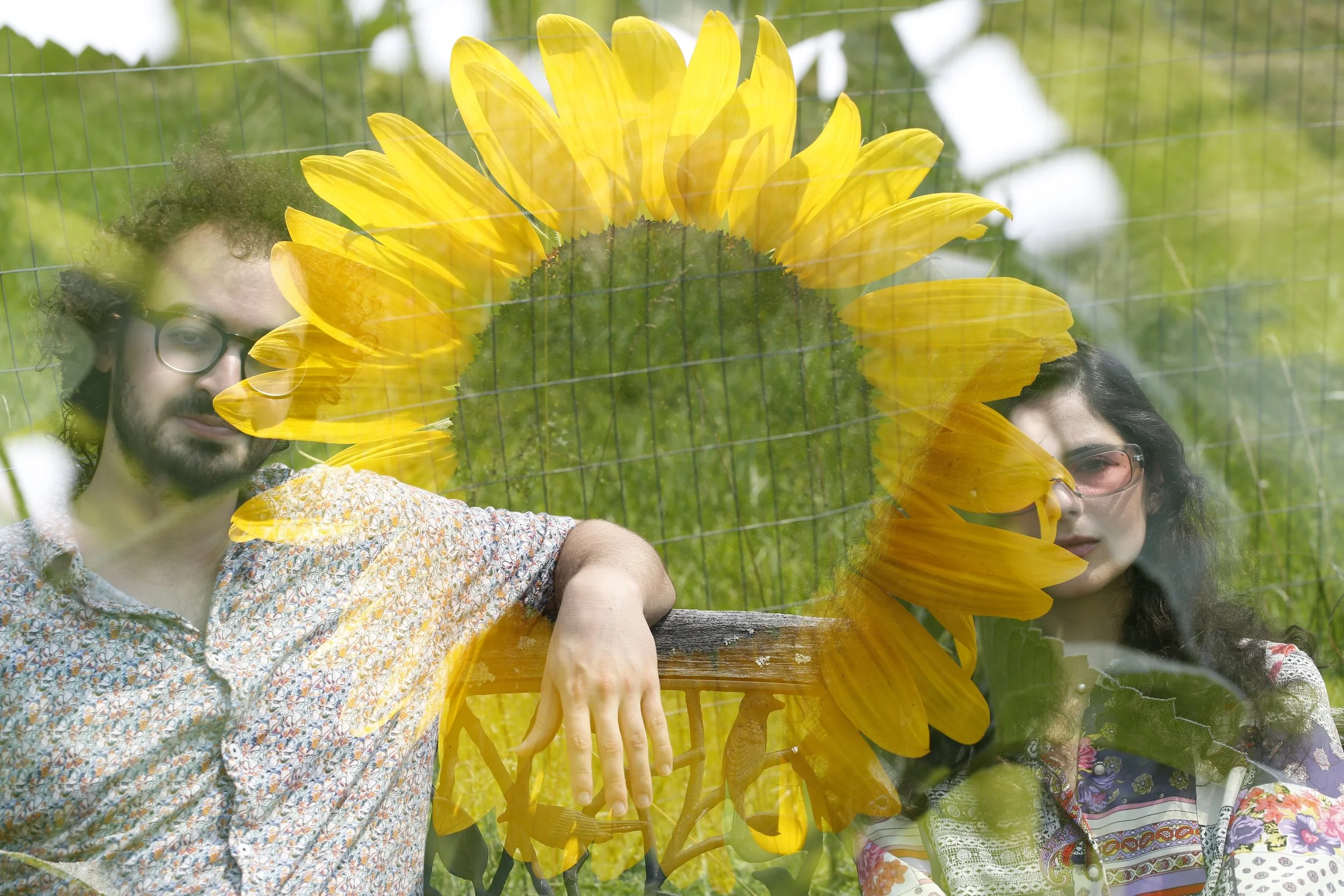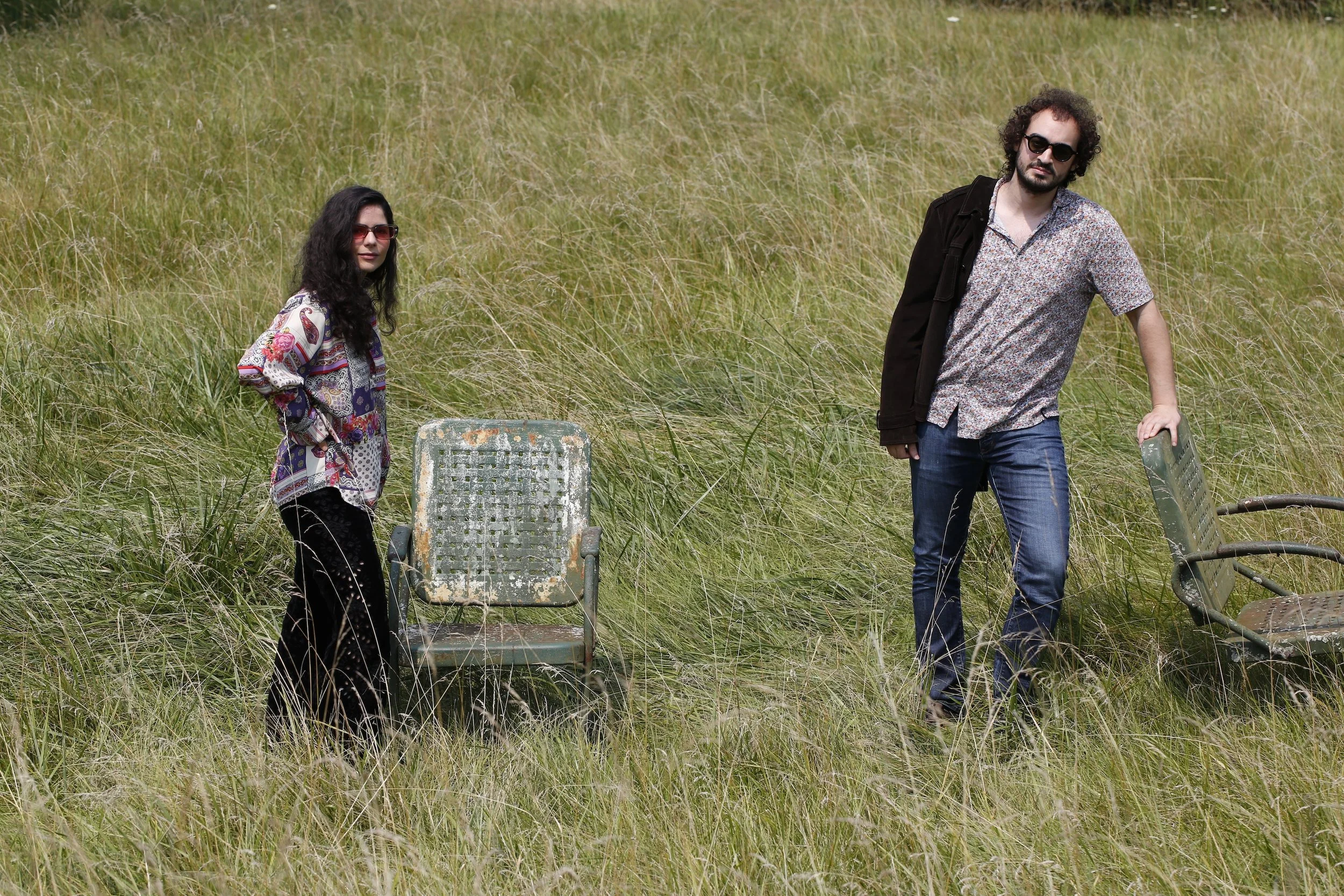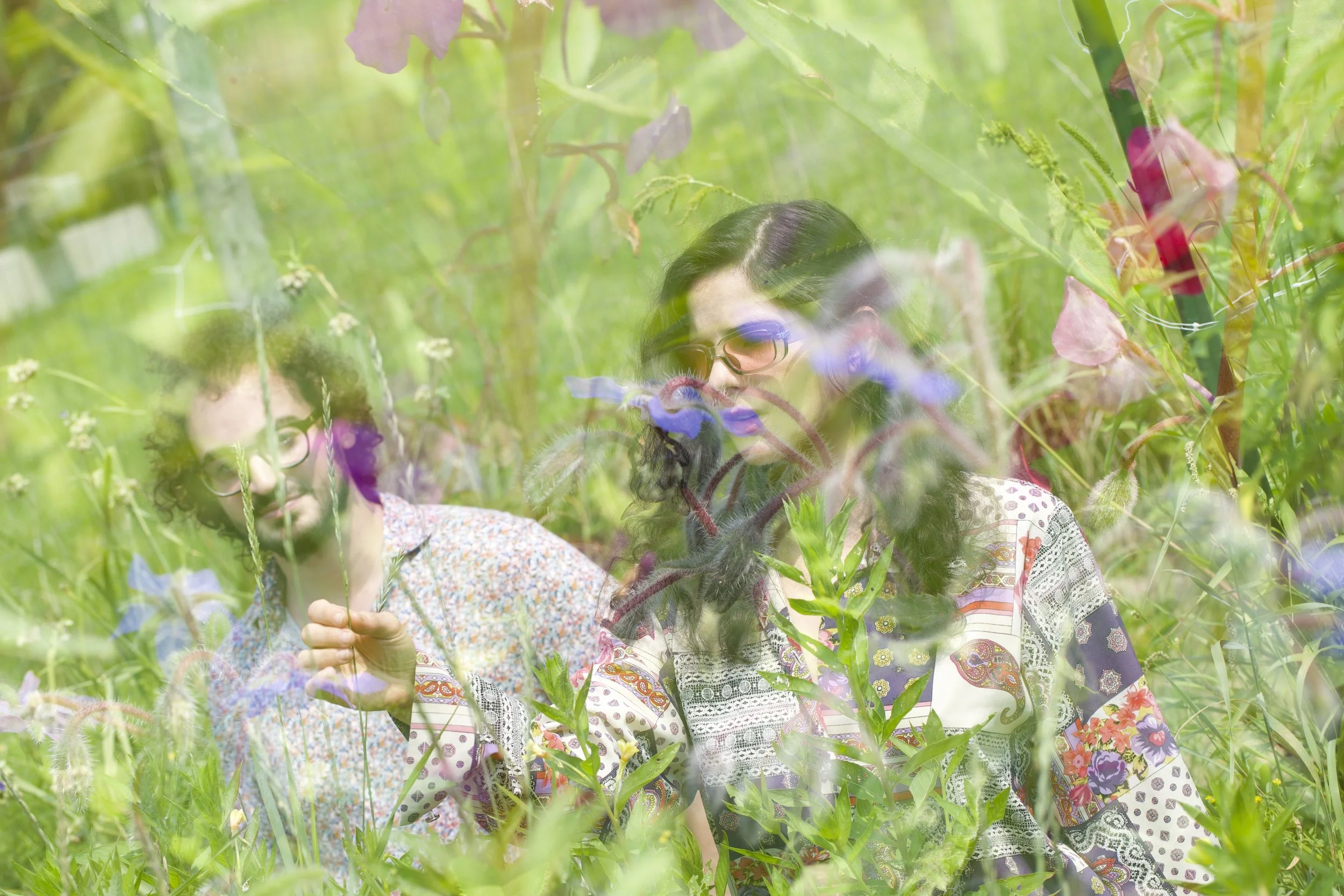Q&A: SORRYNOTSORRY Have a Lot to Say in Latest Release ‘THE OTHER SIDE’
INTERVIEW
INTERVIEW
☆ BY STARLY LOU RIGGS ☆
Photo by Joaquin Broughton
ORRYNOTSORRY STARTED ON A WHIM—Samantha Dagnino and Andrés Cottin met spontaneously in a recording studio in Long Island and hit it off right away. Unapologetically vibrant and vivacious, they occupy a soundscape rife with joyous experimentation. Their latest release, THE OTHER SIDE, is a continuation of this playful ethos, bringing together the duo’s longstanding love for sound and performance and wrapped up in a thoughtful production process.
Both from Venezuela and living in Brooklyn, Dagnino and Cottin met at a time of mutual uncertainty, finding each other in a parallel path. Somehow seemingly destined to meet, their shared vision for artistic exploration, freedom and experimentation fused into something unstoppable. Their live performances are charming, full of movement and color, engaging with and embracing the audience with dancing.
Their music spans a vast array of sound—THE OTHER SIDE with the dreamy Mazzy Star-like cosmic “Aum Hai,” ooey-gooey synth-laden banger “I’ve seen a lot,” and languid mantra “Sex, Drugs, and Cocoa Puffs.” Co-produced by Dagnino and Cotton, mixed by Cottin and mastered by Zach Kornhauser (Portugal. The Man, Sia, Kelly Clarkson), THE OTHER SIDE is cohesive and connected, a testament to the duo’s rare musical bond.
Read more about SORRYNOTSORRY and their latest release THE OTHER SIDE below.
LUNA: I’m sorry to ask this (but also not): why the name SORRYNOTSORRY?
SAMANTHA: Frankly, it came from a necklace I got from a thrift store in Brooklyn. I was looking for a name that was visually a statement, and I found that in SORRYNOTSORRY. It’s an awesome name that looks good on merch and is easy to remember. The philosophy behind it, for me, is that events happen for lessons to be learned. That's how a new state of consciousness can arise. Error is actually an important part of learning.
LUNA: How long have you both been playing music? And Samantha, what inspired you to return to music after taking a break for so long?
ANDRÉS: We both started very early into our lives—5 or 6 years old— but we have a theory that this actually started way before we were even born. Our two dads used to share music in the ‘80s, since it wasn’t easy to find vinyl during that time in Venezuela. They listened to artists like The Cure after school.
SAMANTHA: Throughout my 20s, I was in survival mode, trying to find my place in America—having just immigrated from Venezuela and saying goodbye to the career I had there, starting from zero. During that period, I was focused to work all kinds of jobs: babysitting, postmates, catering. I was even a standardized patient for UCLA School of Medicine.
Honestly, I didn’t have the time to reflect on my experiences. I was on autopilot trying to make ends meet. The pandemic was the moment where I finally had the chance to reconnect with the muse. Songs were pouring out of me with passion. All this energy had been building up inside me. I felt electric... Now that I think about it, maybe that’s why I spent most of my time learning how to play the guitar. I needed distortion to really express what I was feeling inside.
LUNA: Some of your influences really shine through in THE OTHER SIDE—slow melodic melancholy of Portishead and groovy indie sensibilities of Khruangbin. What other kinds of things inspire you, outside of music?
BOTH: We take a lot of inspiration from our physical well-being and nature. We like doing yoga during breaks from rehearsals or writing sessions because it's very grounding. Also, New York and Brooklyn have a lot of artists with inspiring stories, so going out for food or fresh air can give a lot of inspiration.
Photo by Joaquin Broughton
LUNA: It seems like your two really hit it off right away when you first met, and this really rings true in the cohesive sound of this new album. What is your creative process like? Is there a lot of collaboration and experimentation happening as you write?
BOTH: For this record, our process was very simple. We wanted to make songs that were easy to understand. We would find a riff on the bass that was groovy or soothing and then layer guitar parts that were simple and shimmery. The lyrics were easy. We wanted to talk about love, connection and our experiences, but in a universal way, so that everyone could relate.
LUNA: “I’ve seen a lot” reads like a sort of ethereal anthem. It’s bass-heavy, and also seems very experimental in production. What does this track speak to?
BOTH: The song emerged when we were trying out new pedals on the bass and stumbled upon this repeating groove that was hypnotizing, almost mantra-like. The song is meant to inspire people to reflect on what they’ve experienced in their lives, highlighting love and friendship. As if it were a montage reel about life. The vocal performance was meant to give emotional depth to the words. What we see defines how we perceive reality.
LUNA: Talk to me about “Sex, Drugs, and Cocoa Puffs.” The lyrics are pretty cute, though it’s a complex track. Deep electronic bass, repetitive lyrics (“Tell me all day how I’m not supposed to love you”) centered around highs and lows of fluctuating psychedelia. What inspired this song (and does it have anything to do with the Chuck Klosterman book)?
SAMANTHA: It is definitely inspired by the book. I was reading it when I was working on the song structure, so it was next to me on my desk. I was doing some free-flow singing to the music, and I read the title of the book. It opened up the theme for me. I started to reflect on the types of relationships where you don’t have a sense of clarity on where you stand emotionally. One day, you feel very connected to the person, and the next day, they don’t reply to your messages. And how substances and “cocoa puffs” are coping mechanisms to endure these kinds of emotional rollercoasters.
LUNA: Andrés, you mixed the album. How involved were you in the production process? Did you both work together on finding the right sounds?
Photo by Joaquin Broughton
ANDRÉS: We both produced the album from the ground up; there were a lot of valuable decisions from both of us. When you make a record fully independently, it is common for the line between the different stages of production to be blurred, because you have to get your own product over the finish line.
I mixed our previous EP, and Sam trusted my ear for this. When the songs were done, I mixed the album and got it sounding as close as I could to being done, and sent it to Zach Kornhauser for mastering.
LUNA: THE OTHER SIDE as a whole feels incredibly cohesive. Tracks flow from one into the next seamlessly, and there’s a clear journey arc. Can you speak to how these tracks came together, collectively? Was it something you planned from the start, or did you work through them and realize there were similar sounds and themes?
BOTH: We feel the same way about the arc of the album, but this was completely accidental.
When we started writing together, we kept reusing some musical ideas in different ways, like playing a similar bassline but with a different rhythm. This led to a lot of songs being born in the same key and similar tempo, and it was easy to tie them together. “New Ground” came from jamming “Upon Arrival” in a different way. I've seen a lot come from playing “Aum Hai” and then “Light & Dark”… and so on.
LUNA: So, what’s next on the horizon for SORRYNOTSORRY?
BOTH: There are a couple of tracks that didn’t quite make it onto the album, and our fans always ask us about them in concerts! So, we’re making an extended edition of the album, and we want to make vinyl.
For next year, we are planning a Latin Rock album with a lot of cool influences, something like Queens of the Stone Age and Turnstile meets Gorillaz, but in Spanish.



